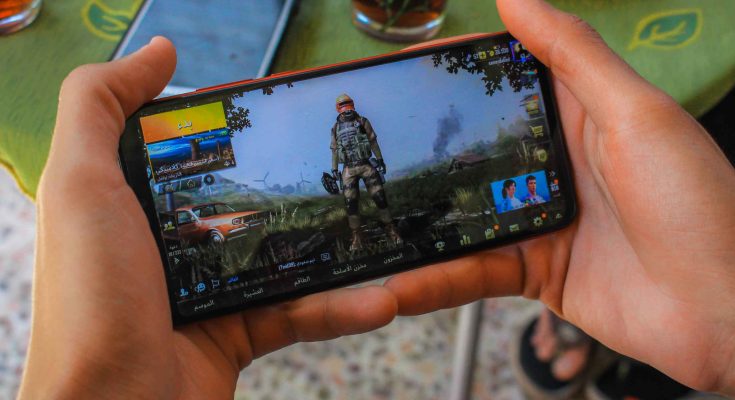The mobile gaming industry has undergone rapid growth and massive changes in the past decade. From simple snake and brick-breaker games on old Nokia phones to today’s visually stunning titles for smartphones and tablets, mobile games have come a long way. Let’s take a look at the major shifts that have shaped the mobile gaming landscape into what it is today.
The Rise of Smartphones
The most pivotal moment that catalyzed the mobile gaming revolution was the rise of smartphones in the late 2000s. With their powerful processors, large HD screens, and motion sensors, smartphones offered capabilities that enabled developers to create more complex and visually appealing games. Titles like Angry Birds and Temple Run became defining hits of the early mobile gaming era.
Whereas mobile games were once limited by keypad controls, touchscreens allowed for more intuitive and immersive gameplay. Swiping, tapping, and tilting the device to control games ushered in new genres such as endless runners and physics-based puzzle games. As smartphone technology continued improving, so did mobile games.
Emergence of the Freemium Model
In the early 2010s, free-to-play or “freemium” games gained popularity. Instead of having to pay upfront, players could download these games for free and pay later for optional in-game items and upgrades. This gave developers a continuous revenue stream while reducing the barrier to entry for attracting users.
Titles like Clash of Clans and Candy Crush Saga demonstrated how wildly profitable the freemium model could be. While criticized at times for aggressive monetization tactics, the freemium approach opened up mobile gaming to the masses. It enabled small studios to compete with gaming giants. For many players, paying a dollar here and there seemed reasonable to access an otherwise free addictive game.
Multiplayer and Social Features
Another shift in the early 2010s was a focus on multiplayer and social features in mobile games. As opposed to solitary gaming, titles like Words with Friends brought a social element that attracted wider audiences. Real-time PvP games allowed players to compete and interact with friends and other gamers around the world.
Social sharing and leaderboards were added to create a competitive community environment. Developers realized mobile gaming could become more of a social networking platform. Allowing and encouraging players to connect added longevity to titles as users were invested not just in the game but in their online relationships.
The Casual Market Explosion
While consoles and PCs traditionally catered to hardcore gamers, mobile gaming on the other hand appealed to a more mainstream “casual” demographic. From kids to teens, adults to seniors, everyone could enjoy quick and accessible mobile game play. Whether waiting in line, commuting on a train, or simply looking to pass idle time, mobile games provided that instant entertainment fix.
Simple swiping and match-3 mechanics allowed easy onboarding for casual audiences. Mobile gaming became a widespread cultural phenomenon and hobby for people who did not identify as traditional gamers. Major successes like Candy Crush Saga, Flappy Bird, and Subway Surfers demonstrated the potential of hyper-casual gaming.
Advanced Gameplay Capabilities
Initially limited in scope, mobile game developers eventually pushed the boundaries of what was possible given the hardware constraints. As mobile processors and GPUs improved each year, studios could add depth and complexity approaching that of PC/console quality experiences.
FPS titles like PUBG Mobile and Call of Duty: Mobile brought precise controls, HD graphics, and depth of content on par with their PC/console counterparts. Demanding games once reserved only for dedicated gaming rigs were now possible in the palm of your hand. eSports competitions based around mobile titles also emerged as a result.
Transition to Free-to-Play
Whereas premium pay-upfront games were once the norm, the freemium model has become ubiquitous in the mobile space. Even major franchises like Mario Kart, Call of Duty, and FIFA have adopted free-to-play mechanics. It proved to be the most viable approach to attract a broad user base and maximize revenue.
Paying upfront presents too much friction given the abundance of free game options. While a small market for premium mobile titles remains, free games supported by in-app purchases, ads, and battle passes have become the dominant paradigm. Offering a free trial experience before committing payment is now table stakes for any successful mobile game.
Shift to Live Service Games
Mobile games today are increasingly designed as live service games meant to engage players over long periods of time, not just provide a one-and-done experience. Regular content updates, seasonal events, battle passes, and community activities are used to continually give players reasons to come back.
Whereas previous mobile titles had finite endings, games like Genshin Impact and Pokémon GO are ever-evolving persistent worlds. This long-tail monetization approach aims to turn mobile gaming into more of an ongoing lifestyle and social hobby. Developers can continuously churn out new content to retain their player base.
Cloud & Mobile Gaming Convergence
Emerging cloud gaming platforms like Xbox Cloud Gaming are starting to blur the lines between mobile and console/PC gaming. By streaming games from the cloud, mobile users can now access franchises like Halo and Forza Horizon that were previously only available on Xbox consoles.
Google Stadia and Nvidia GeForce Now offer similar mobile cloud gaming capabilities. As internet connection speeds improve, cloud gaming could transform mobile into a platform capable of playing any high-end PC or console game, removing past technical limitations.
The Future: AR, VR, & 5G
Looking ahead, innovations like AR, VR, and 5G connectivity will bring about the next evolution in mobile gaming. Niantic gave a taste of things to come with the location-based AR gameplay of Pokémon GO. Full-fledged AR glasses could make this style of gaming even more advanced and immersive.
VR headsets like the standalone Oculus Quest are allowing cutting-edge virtual reality experiences untethered from a PC. And 5G networks will drastically reduce online multiplayer latency while enabling graphics-rich cloud gaming. The future horizons of mobile gaming are brighter than ever thanks to relentless hardware and software advances.
Read more: Unleashing Creativity: Innovations in Word Game Design and Development
Conclusion
Over a relatively short timespan, mobile games have gone from basic time-wasters to interactive multimedia experiences pushing the boundaries of entertainment technology. Looking back at how far mobile gaming has come in just over a decade is staggering. Given its history of rapid innovation, the next major leaps in capabilities surely await just around the corner. Mobile game developers continue finding creative ways to captivate audiences and turn their devices into dynamic gaming consoles that fit in your pocket.



